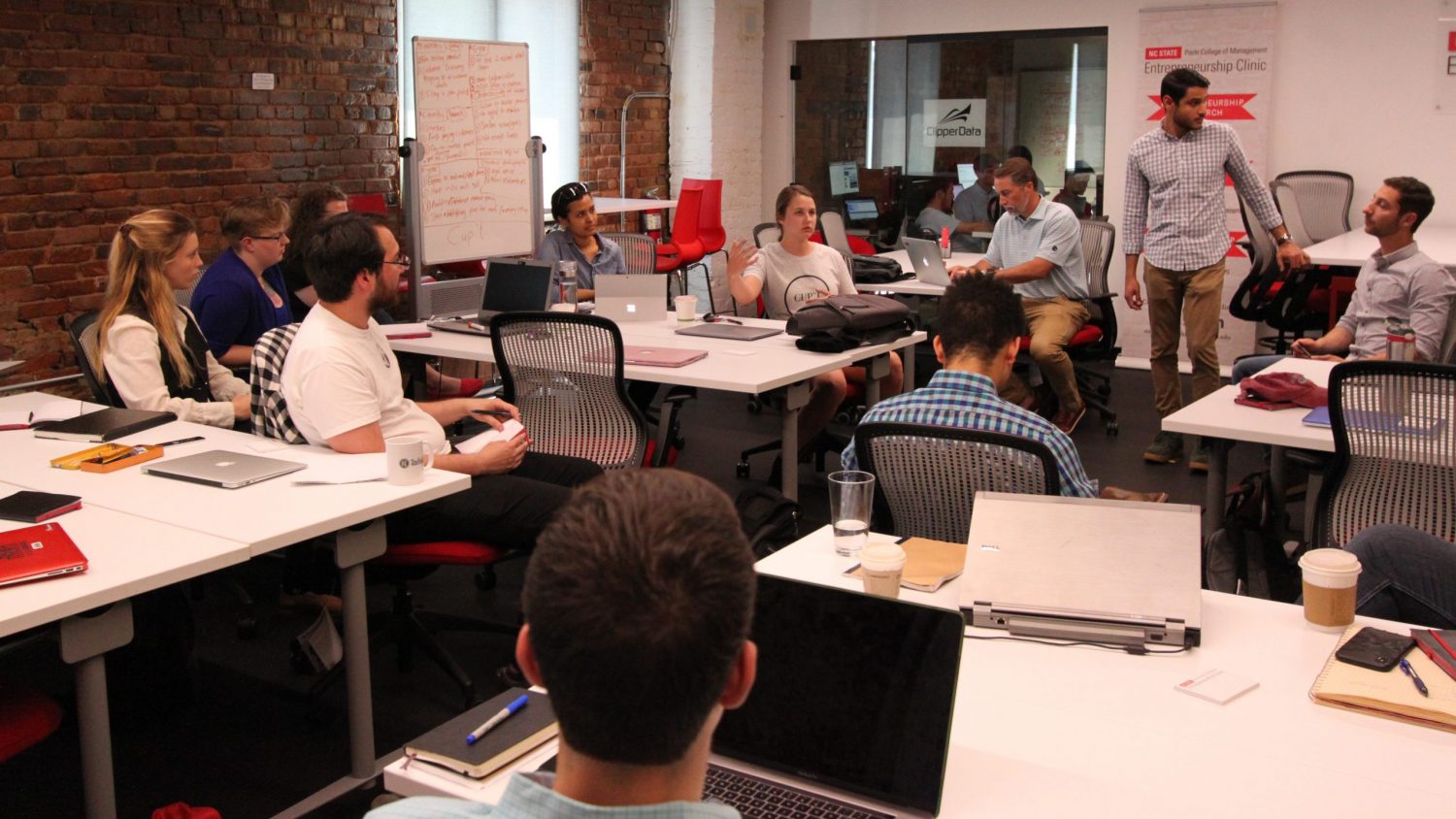First Impressions and Founders: Context Counts
The best approach to appearance management is choosing a generous network, Poole scholars find.

Whether enrolling new customers or developing potential partners, entrepreneurs interact with individuals and groups all the time. Those interactions are crucial to securing the information and resources to make their venture survive and thrive—the entrepreneur’s main job.
Increasingly, those interactions happen in entrepreneurial networking groups, where members can act as de facto marketing teams for their fellow founders. New research from Poole College scholars Patrick Flynn, Brad Kirkman and Jeff Pollack probes these interactions for insights into how first impressions in these groups can affect a venture’s growth.
“Understanding how the social context shapes the ways in which entrepreneurs manage their impressions, and how those impressions are received, is a really fascinating topic,” said Flynn, the Matthew and Soogi Hong Fellow and assistant professor of management. ”And we, as researchers, know precious little about the cross-level effects of entrepreneur impression management in groups.”
The Poole trio—along with co-author Lynn MacFarland of the Darla Moore School of Business at the University of South Carolina—followed weekly meetings of 24 Business Network International (BNI) groups. They looked for instances of five common first-impression tactics—known as “impression management” choices in the literature—in those groups: self-promotion, exemplification, ingratiation, supplication and intimidation.

In everyday interactions, behaviors like self-promotion, intimidation and ingratiation can be unappealing or even antisocial. But in networking groups where members prioritize group gains over individual ones, the majority of these tactics contributed to revenue growth across the entrepreneurs’ ventures in several ways, according to “When Does Entrepreneurs’ Impression Management Enhance Their Networking Performance? The Cross-Level Moderating Role of Collective Altruism,” which appeared in the August 2024 issue of Group & Organization Management.
The study suggests that entrepreneurs should pay close attention to group norms when considering networks to join.

“If the group norm is that everyone is out for themselves, then be careful,” said Pollack, the Lynn T. Clark II Distinguished Professor of Entrepreneurship. “Anything you do that could be viewed as selfish might backfire. But, if the norm is collectively altruistic, then your potentially selfish actions could be seen as productive.”
So, how do you know whether a group is collectively altruistic? If members tend to help others who have heavy workloads and regularly lend a helping hand to those around them, there’s a good chance the group is high in collective altruism.
That raises an interesting leadership-oriented question. Kirkman, the General (Ret.) H. Hugh Shelton Distinguished Professor of Leadership and an expert in leading groups and teams, suggests that group leaders play a large role in setting examples that members can use to better understand how to act.

“When it comes to setting the tone for an altruistic group, leaders can be behavioral role models for their group members to emulate,” Kirkman said.
- Categories:


